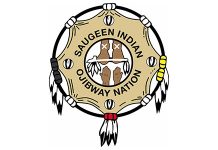Eighty years ago today, World War II finally came to an end for all the world. We in Canada, had been at war with Japan since December 8, 1941.
In the 1930s, Japan engaged in expansionist moves, seizing territory in China and officially going to war with them in 1937. In 1940, it joined Germany and Italy to form the Axis powers of the Second World War. In December 1941, Japan attacked British, American, and Dutch territories in the Pacific Region.
Starting in 1939, Canada reinforced its West Coast defences. These efforts intensified in 1941 as Japan’s aggression grew. Acting on unfounded, racially driven fears, Canada uprooted Japanese Canadians and forcibly relocated them away from our West Coast. When we declared war on Japan, we strengthened our air, land, and sea defences on the B.C. Coast.
One of the major areas of defence involved radar stations being located along the British Columbia coast that followed all aircraft movements. This activity was reported to a control centre in Victoria, where a young Port Elgin lady was one of those who placed plane models on a giant planning board of West Coast B.C. as reports came in.


Her name was Vivian Winnifred Sees. Today, she is our last surviving veteran of WWII at 102 years of age. She now lives in London, Ontario, where she first moved to attend Business School when the war ended. I regularly contact her family to check on how she is doing. On my recent call, I was not able to converse with her, but did give her the message that we are still thinking of her.
In 2021, the then 98-year-old Vivian was the star attraction at the unveiling of the Ladies in Uniform interpretive plaque located at the entrance to Saugeen Shores Municipal offices on Tomlinson Drive.

Canada’s contributions were widespread throughout the Pacific Region. The most notable involvement happened in October of 1941, when 2,000 Canadian soldiers were dispatched to Hong Kong to reinforce the British Colony from invasion by the Japanese. Brutal fighting took place, and 290 Canadian soldiers died, and the remainder were taken prisoner. The allied prisoners suffered malnutrition, disease, and abuse in captivity until the war ended, with lasting health consequences.
Some 8,000 Canadians served in Southeast Asia, India and Ceylon (Sri Lanka) against the Japanese. In August 1943, Canadians and American soldiers invaded the American Aleutian Islands only to find that the Japanese had secretly withdrawn.
With the war in Europe coming to an end in the spring of 1945, Canada was turning its war effort to the Pacific region. Ships, aircraft, and army personnel were being prepared to join the battle. The war would end on August 15, 1945, before they would see action.
It is hard to even imagine that somewhere between 50 and 80 million people died in that war. Most were Chinese and Southeast Asians. It took the use of an atomic bomb to bring it to an end.

For little 3½-year-old Billy Streeter, August 15, 1945, meant waiting another month for his father to return from Europe, and seeing him for the first time. Dad shipped out in the fall of 1941, and I was born in May, 1942. For us, the war ended on September 14th, of 1945, when Dad arrived home for a big family gathering in Chesley, along with his brother and sister, who also had served. My uncle Les also served on our West Coast.
Today, we need to give 102-year-old Vivian a special thank you, and “wish her well”.
WE WILL REMEMBER THEM












